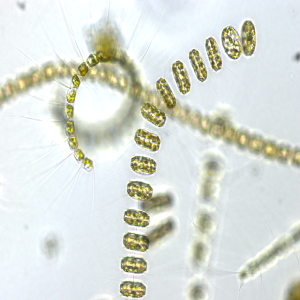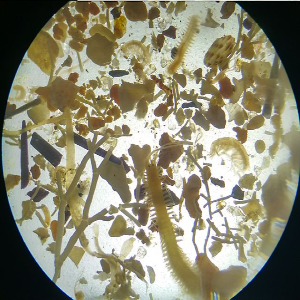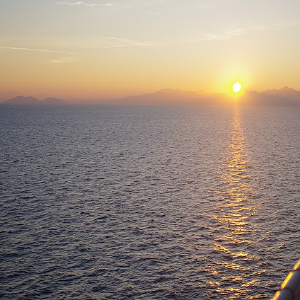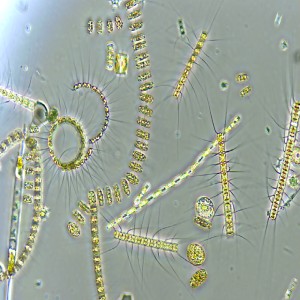Molecular data attest to the occurrence of autochthonous Daphnia pulex (Crustacea, Branchiopoda) populations in Sicily, Italy
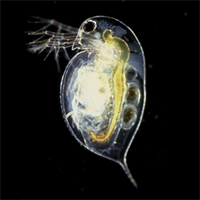
Accepted: 14 September 2021
HTML: 11
All claims expressed in this article are solely those of the authors and do not necessarily represent those of their affiliated organizations, or those of the publisher, the editors and the reviewers. Any product that may be evaluated in this article or claim that may be made by its manufacturer is not guaranteed or endorsed by the publisher.
Biological invasions are known to be among the most important threats to the long-term conservation of native biota, and their effects might be even more difficult to contrast when they are cryptic, i.e., when the non-native invaders cannot be easily recognised based on morphology, and can thus be confused with native taxa. Such cryptic invasions are known to widely occur in the cladoceran genus Daphnia O.F. Müller, 1785, so that the actual distribution and status of most species and lineages need to be checked with a genetic approach. In the frame of this work, we investigated if the Sicilian populations of D. (Daphnia) pulex Leydig, 1860 belonged to the allochthonous North American lineage, which is known to occur in several regions of the Palearctic and Afrotropical biogeographical regions, or rather to the autochthonous European lineage of the species. The molecular results obtained, based on a fragment of the mitochondrial gene encoding for NADH subunit dehydrogenase 5 (ND5), allowed us to rule out the allochthonous status of the species, confirming the presence of autochthonous relictual lineages of D. pulex in Sicily. The native status of these populations is in agreement with their local distribution, limited to natural and poorly-impacted water bodies mostly located in wooded areas at medium and high altitudes. The current local distribution of D. pulex in Sicily is possibly linked to the end of the last glacial maximum and the onset of warmer climatic conditions in the early Holocene, which led the species to take refuge in colder microthermal refugia located at high altitudes, determining their current relictual distribution.
Akaike H, 1974. A New look at the statistical model identification. IEEE Trans. Automat. Contr. 19:716–723.
Alonso M, 1996. Crustacea, Branchiopoda. Fauna Iberica 7. Museo Nacional de Ciencias Naturales, CSIC, Madrid, 486 pp.
Benzie JAH, 2005. Cladocera: the genus Daphnia (including Daphniopsis). Guides to the identification of the Microinvertebrates of the Continental Waters of the World. Backhuys Publishers, Leiden: 376 pp.
Conde-Porcuna JM, Veiga J, Moreno E, Jiménez L, Ramos-Rodríguez E, Pérez-Martínez C, 2021. Spatiotemporal genetic structure in the Daphnia pulex complex from Sierra Nevada lakes (Spain): reproductive mode and first record of North American D. cf. pulex in European alpine lakes. J. Plankton Res. 43:380–395.
Crease TJ, Omilian AR, Costanzo KS, Taylor DJ, 2012. Transcontinental phylogeography of the Daphnia pulex species complex. PLoS One 7:e46620.
Curry B, Henne PD, Mesquita-Joanes F, Marrone F, Pieri V, La Mantia T, Calò C, Tinner W, 2016. Holocene paleoclimate inferred from salinity histories of adjacent lakes in southwestern Sicily (Italy). Quat. Sci. Rev. 150: 67-83.
Dufresne F, Marková S, Vergilino R, Ventura M, Kotlík P, 2011. Diversity in the reproductive modes of European Daphnia pulicaria deviates from the geographical parthenogenesis. PLoS One 6:e20049.
Fadda A, Marková S, Kotlík P, Lugliè A, Padedda B, Buscarinu P, Sechi N, Manca M, 2011. First records of planktonic crustaceans in Sardinian reservoirs. Biologia 66:856–865.
Felsenstein J, 1985. Confidence limits on phylogenies: An approach using the bootstrap. Evolution 39:783–791.
Gherardi F, Bertolino S, Bodon M, Casellato S, Cianfanelli S, Ferraguti M, Lori E, Mura G, Nocita A, Riccardi N, Rossetti G, Rota E, Scalera R, Zerunian S, Tricarico E, 2007. Animal xenodiversity in Italian inland waters: distribution, modes of arrival, and pathways. Biol. Invasions 10:435–454.
Guindon S, Gascuel O, 2003. A simple, fast, and accurate algorithm to estimate large phylogenies by maximum likelihood. Syst. Biol. 52:696–704.
Kumar S, Stecher G, Li M, Knyaz C, Tamura K, 2018. MEGA X: Molecular evolutionary genetics analysis across computing platforms. Mol. Biol. Evol. 35:1547–1549.
Lanfear R, Calcott B, Ho SYW, Guindon S, 2012. Partition-Finder: Combined selection of partitioning schemes and substitution models for phylogenetic analyses. Mol. Biol. Evol. 29:1695–1701.
Ma XL, Petrusek A, Wolinska J, Hu W, Yin MB, 2019. Lineage diversity and reproductive modes of the Daphnia pulex group in Chinese lakes and reservoirs. Mol. Phylogenet. Evol. 130:424–433.
Margaritora FG, 1985. Cladocera. Fauna d’Italia, Ed. Calderini, Bologna, 399 pp.
Margaritora FG, Vagaggini D, Stoch F, 2021. Crustacea Branchiopoda Cladocera. In: Bologna MA, Zapparoli M, Oliverio M, Minelli A, Bonato L, Cianferoni F, Stoch F. (eds.), Checklist of the Italian Fauna. Version 1.0. Last update: 2021-05-31.
Marková S, Dufresne F, Manca M, Kotlik P, 2013. Mitochondrial capture misleads about ecological speciation in the Daphnia pulex complex. PLoS One 8:e69497.
Marková S, Maurone C, Racchetti E, Bartoli M, Rossi V, 2017. Daphnia diversity in water bodies of the Po River Basin. J. Limnol. 76:261-271.
Marrone F, Alfonso G, Naselli-Flores L, 2007. On Daphnia (Ctenodaphnia) similis Claus, 1877 and other interesting anomopods (Crustacea, Branchiopoda) from Apulia (Southern Italy). Thalassia Salentina 30: 45-55.
Marrone F, Barone R, Naselli-Flores L, 2006. Ecological characterization and cladocerans, calanoid copepods and large branchiopods of temporary ponds in a Mediterranean island (Sicily, Southern Italy). Chem. Ecol. 22:181–190.
Marrone F, Castelli G, Naselli-Flores L, 2009. Sicilian Temporary Ponds: an overview on the composition and affinities of their crustacean biota, p. 189-202. In: Fraga I, Argiumbau P. (eds.), International Conference on Mediterranean Temporary Ponds. Proceedings & Abstracts. Consell Insular de Menorca. Recerca, 14. Maό, Menorca.
Marrone F, Naselli-Flores L, 2015. A review on the animal xenodiversity in Sicilian inland waters (Italy). Adv. Oceanogr. Limnol. 6:5451.
Marrone F, Vecchioni L, 2020. The genus Daphnia in Sicily and Malta (Crustacea, Branchiopoda, Anomopoda). pp. 105-124 in: La Mantia et al. (eds.), Life on Islands, 1. Biodiversity in Sicily and surrounding islands. Studies dedicated to Bruno Massa. Edizioni Danaus, Palermo.
Mergeay J, Aguilera X, Declerck S, Petrusek A, Huyse T, De Meester L, 2008. The genetic legacy of polyploid Bolivian Daphnia: the tropical Andes as a source for the North and South American D. pulicaria complex. Mol. Ecol. 17:1789–1800.
Mergeay J, Verschuren D, De Meester L, 2006. Invasion of an asexual American water flea clone throughout Africa and rapid displacement of a native sibling species. Proc. R. Soc. Lond. B. Biol. Sci. 273:2839–2844.
Naselli-Flores L, Marrone F, 2019. Different invasibility of permanent and temporary waterbodies in a semiarid Mediterranean Island. Inland Waters 9:411–421.
QGIS Development Team (2018) QGIS Geographic Information System. Open-Source Geospatial Foundation Project. Available from: http://www.qgis.org/
Riccardi N, Giussani G, Margaritora F, Couchaud B, 2004. Population dynamics of the pioneer population of Daphnia parvula Fordyce during the invasion of Lake Candia (northern Italy). J. Limnol. 63:44–52.
Richterich P, 1998. Estimation of errors in “raw” DNA sequences: a validation study. Genome Res. 8:251-259.
Ronquist F, Teslenko M, Van Der Mark P, Ayres DL, Darling A, Höhna S, Larget B, Liu L, Suchard MA, Huelsenbeck JP, 2012. MrBayes 3.2: efficient Bayesian phylogenetic inference and model choice across a large model space. Syst. Biol. 61:539-542.
Ruffo S, Stoch F, 2005. [Checklist e distribuzione della fauna italiana].[Article in Italian]. Memorie del Museo Civico di Storia Naturale di Verona 2 Ser. Sez. Sci. Vita 16:1–307.
Schwenk K, Posada D, Hebert PDN, 2000. Molecular systematics of European Hyalodaphnia: the role of contemporary hybridization in ancient species. Proc. R. Soc. B 267:1833–1842.
Thompson JD, Gibson TJ, Plewniak F, Jeanmougin F, Higgins DG, 1997. The CLUSTAL X windows interface: Flexible strategies for multiple sequence alignment aided by quality analysis tools. Nucleic Acids Res. 25:4876–4882.
Vergilino R, Marková S, Ventura M, Manca M, Dufresne F, 2011. Reticulate evolution of the Daphnia pulex complex as revealed by nuclear markers. Mol. Ecol. 20:1191–1207.
PAGEPress has chosen to apply the Creative Commons Attribution NonCommercial 4.0 International License (CC BY-NC 4.0) to all manuscripts to be published.



 https://doi.org/10.4081/aiol.2021.9947
https://doi.org/10.4081/aiol.2021.9947




